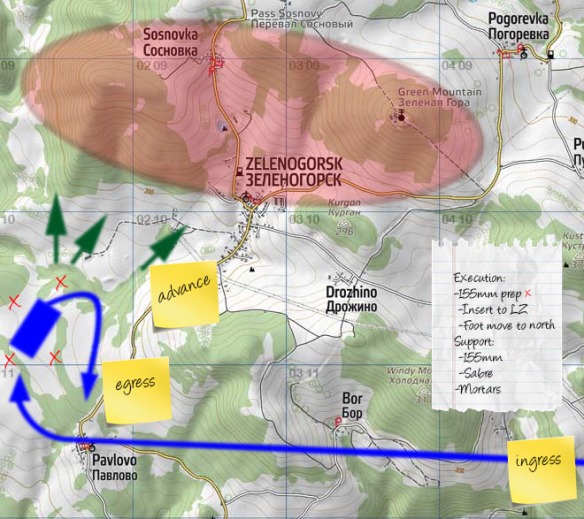During military operations in South Vietnam in the early 1960s, command and control of tactical forces assumed new importance. Military operations conducted by the Viet Cong were mainly hit-and-run tactics against small advisory American units and the South Vietnamese army in jungle areas. Command and control necessitated an aerial command post from which a Vietnamese commander, together with his American adviser and a limited staff, could get quickly to an area under attack.
That procedure often meant briefing reaction forces en route to the objective, coordinating with other friendly forces, and providing additional support as needed-in short, using several radios at the same time. The commander and his staff had to compete with the high noise level in the cabin to talk to each other and to crew members. An early attempt to meet these needs was made by lashing three FM radios together in the aircraft passenger compartment and mounting the antennas at a 45-degree angle on the landing skids. Although successful, the scheme was awkward and lacked the needed very high frequency (VHF) and high-frequency single-sideband radios. And the rigged method failed to provide for communications within the helicopter.
In early 1963, the Army Concept Team in South Vietnam defined requirements for an aerial command post for command control of ground and air operations. The plan was approved by higher authority, and four command post communications system consoles for UH-1B Huey helicopters were built. Each included an operations table and a compact five-position interphone system independent of the aircraft interphone but capable of entry into that system. Each console also provided equipment for two different FM radio channels.
The first consoles arrived in South Vietnam in December 1963 and were issued to two Army aviation units for evaluation. These units found the original design to be too ambitious. Because of the size and weight of the console, two single seats normally occupied by the aerial door gunners had to be removed, and the additional weight upset the helicopter’s center of gravity. Nevertheless, when the map board and table were eliminated and the single-sideband radio relocated, the console performed so well that in July 1964 the U. S. Military Assistance Command, Vietnam put in an urgent request for a helicopter command post for each Vietnamese division and one corps.
While improvements in air mobility operations were being tested and evaluated in Vietnam, the 11th Air Assault Division was activated at Fort Benning, Georgia, on 15 February 1963 and given a high priority on personnel and equipment to develop new airmobile concepts and procedures. When the question of air versus ground radios arose, the division chose ground radios like those used by ground maneuver units in the helicopter command consoles. It permitted rapid replacement of damaged or inoperative radios at almost any supply point or battalion maintenance facility. It also eased the problem of obtaining spare parts. There were greater operational advantages over the aircraft radios in that ground radios were compatible and had a greater range.
The U. S. Army Electronics Research and Development Laboratories at Fort Monmouth, New Jersey, built the first prototype to division specifications. It was delivered in March 1964 and, after testing and modification, was finally designated the Airborne Communications Control AN/ASC-5. Fifteen more were built for the division (which became the 1st Cavalry Division in South Vietnam). Adaptations placed this specialized equipment in fixed wing aircraft as well.
The unique airborne equipment ensured communication with all support units and permitted planning and execution of tactical troop moves and, most importantly, the ability to have immediate surveillance of the battle area so that entire operations could be directed from airborne command posts. The use of an airborne tactical operations center was new to command and control on the battlefield but would become part of the scheme of maneuver for U. S. forces. The idea that grew out of operational needs in South Vietnam remains today a big part of commanding and controlling military operations on the battlefield.
During the short 1990-1991 Gulf War, aerial command and control used the UH-60 Black Hawk helicopter, though with communications technology designed during the Vietnam War. The command-and-control suite only provided line-of-sight single-frequency voice communications, so aircrews had to rely on maps and other devices to navigate and obtain battlefield intelligence. The system was cumbersome, incompatible with the current generation of frequency-hopping tactical radios, and lacked provision for receiving or transmitting digital data.
For the Iraq War, beginning in 2003, the deep airborne assault by the 101st Airborne Division featured a jump (mobile tactical) command post that provided communications support. Known as the C2 (for command and control), the UH-60 helicopter provided ultra-high frequency communications, high-frequency radio, single-channel tactical satellite links, and FM communications- the same as ground forces. These helicopters were key conduits between the leading edge of the division’s operations and main headquarters, depending on which was in charge at different times. The C2 aircraft is more than a communications relay as it can also serve as a flying command post capable of carrying senior commanders.
Sources Ackerman, Robert K. 2003. “Information Technology Drives Tip of Airborne Spear.” Signal (June). [Online article; retrieved February 2006.] http://www.afcea.org/ signal/articles/anmviewer. asp? a=204 &z=40. Bergen, John D. 1986. Military Communications: A Test for Technology. Washington, DC: Government Printing Office, Center for Military History Publication 91-12. Myer, Charles R. 1982. Division-Level Communications, 1962-1973. Washington, DC: Government Printing Office, Center for Military History Publication 90-11. Reinzi, Thomas M. 1972. Communications- Electronics, 1962-1970. Washington, DC: Government Printing Office, Center for Military History Publication 90-9-1.
